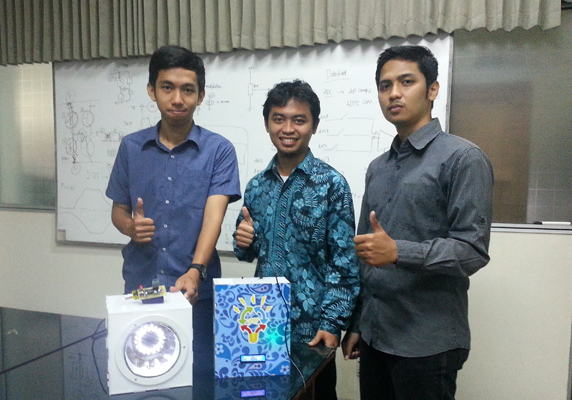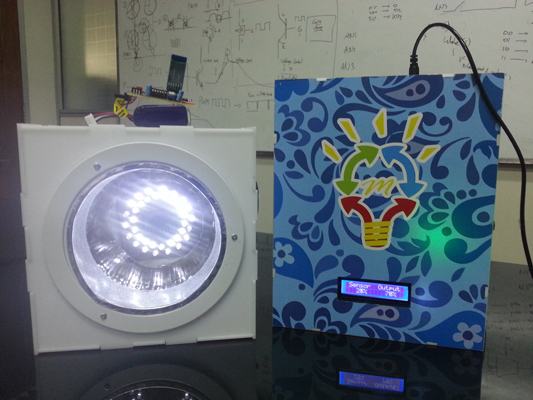UGM students successfully snatched first place in an Innovation Competition organised by state oil enterprise Pertamina of Cilacap branch on February 25, 2016. The team from the Faculty of Engineering UGM won the first place by proposing automatic light intensity regulatory based on natural light sensor.
The competition held by Pertamina Cilacap was attended by 50 student teams from Indonesia. UGM team consisting of Muhammad Hasan Habib, Handika Putra, and Irfan Joyokusumo from the Department of Electrical and Information Technology Engineering (DTETI) successfully beat 24 other teams from various universities, including Bandung Institute of Technology, University of North Sumatra, Jenderal Sudirman University, State University of Malang, and Airlangga University.
M. Hasan Habib, chairman of the UGM team, Joss team, said that 25 teams from several universities participated in the university student category. Eight teams that qualify for presentation in the final round were then selected.
“We did presentation in the final round and did a demo model of automatic light intensity regulatory based on natural light sensor (Wi-LLC). Thank God, we were declared the best team,” he said on Wednesday (2/3) at the Faculty of Engineering.
The automatic light intensity regulatory based on natural light sensor is named Wireless Light Controller (Wi-LLC). This program was developed to reduce the consumption of electrical energy by making use of natural light.
“About 9-20 percent of energy consumption in Indonesia is not optimally used, especially in the lighting sector. That prompted us to seek a solution to the problem,” said Habib.
After that, they then attempted to take advantage of natural light from the sun to reduce the use of electricity. With Wi-LLC, later lighting level (luxs) on conventional lamps can be reduced by an additional luxs of natural light. “We are developing a model that can harness natural light to reduce electrical energy consumption,” added Handika Putra.
Handika explained that Wi-LLC is composed of three main components. The components are LED lights, main controller, and a wireless light sensor. The tool will work when natural light comes into the room then the sensor will capture the light stimuli. The sensor will transmit data to the main controller wirelessly. The main controller will identify the quantity of natural light received by the sensor. Thereafter, it will be processed in the main controller. The results will be used to control the lights so that the brightness of the lamps will be reduced by the same amount of natural light intensity.
“Suppose there is 20% natural light in the room, that amount will contribute to reduce the lamp brightness by 20 percent. Thus, the lights work only 80 percent of it,” he explained.
Wi-LLC model has been put on the list of interest by Pertamina Cilacap. Therefore, Habib and his colleagues continue to conduct research to create the Wi-LLC products that are tested in the laboratory and also licensed.
“We are currently focusing on a research to make this product. We hope this product will be ready this year,” added Irfan Joyokusumo.
Irfan said that in the near future they would add some controlled lighting groups to this tool. In addition, they will also improve the reliability of wireless light sensor. “In the future we will also add a data storage facility that helps the user monitor the development of energy that can be reduced,” he said.




